Bitcoin
Bitcoin CPI
Venture Portfolio
Funds
Market Insights
Indicators
About
Contact

May 25, 2023





Bitcoin Ordinals are one of the latest innovations in Bitcoin, proving to the world that NFTs are possible on the Bitcoin network.
In this guide, you will learn what Bitcoin Ordinals are, how they work, and how they birthed a new, vibrant market for on-chain Bitcoin NFTs.
Ordinal Theory entails serially numbering each satoshi in the sequence in which it was mined, beginning from zero. A satoshi (or sat) is the smallest unit of bitcoin, representing one-hundredth millionth of 1 BTC. Software developer Casey Rodarmor proposed this theory on his blog at the start of 2023.
Rodarmor’s numbering scheme uses ordinal numbers, or Ordinals in a mathematical sense. Each sat of all the mined supply gets a number in the order in which it was mined and transferred from transaction inputs to outputs. Ordinals make it easy to identify, track, inscribe, and transfer individual sats.
The serial numbers given to each satoshi are not part of the Bitcoin protocol itself, and no on-chain footprint exists. This means the Bitcoin Core software itself isn’t aware of the numbering scheme and doesn’t implement it. Nonetheless, contrary to conventional NFTs, Bitcoin-native, on-chain NFTs can now be recorded and stored on the blockchain.
Ordinals refer to individually numbered satoshis. However, the more common use of the term Ordinals is to describe a new type of non-fungible token (NFT) created by inscribing individual satoshis with digital assets. Ordinal Theory creator Rodarmor calls these types of ordinal inscriptions digital artifacts.
Ordinals work with the Bitcoin blockchain as it is. No changes have been made to the blockchain to make Bitcoin-native NFTs a reality. Also, Ordinals don’t require another blockchain or any other token, whereas previously, Bitcoin NFTs only existed thanks to layer-2 protocols like Counterparty, the Liquid Network, or Stacks.
Ordinal inscriptions are Bitcoin-native NFTs created by permanently inscribing (attaching) individual sats with things like images, SVG, GIFs, HTML, or texts.
To inscribe sats, users need a special software called Ord and a Bitcoin node. Ord implements Ordinal Theory, while the Bitcoin node provides a user with the present state of the blockchain. However, users don’t need to make use of this software. User-friendly NFT marketplaces like Gamma have made it easy for anyone to inscribe sats without requiring a Bitcoin node setup.
Inscribed sats are different from other sats and easy to identify. Furthermore, it’s simple to track the movements and ownership of inscribed sats over time. As a result, inscribed sats can be traded.
Inscriptions are stored in an unspent transaction output (UTXO). Users can send inscriptions to any Bitcoin address, where they can remain safe as long as the UTXO isn’t spent. However, if you don’t have the knowledge and skills to prevent your wallet from spending the UTXO holding the inscription, it’s advisable to use ord-compatible wallets like Hiro, Sparrow, and Xverse.
Digital artifacts is the term used by Rodarmor to describe these new Bitcoin NFTs. Digital artifacts refer to ordinal inscriptions, and all digital artifacts are NFTs.
However, not all NFTs are digital artifacts. Digital artifacts are immutable, complete, decentralized, and permissionless. They are immutable because no one can change them once they are added onto the blockchain and complete since they store all NFT metadata on-chain. Moreover, digital artifacts don’t pretend to support on-chain royalties.
Rodarmor doesn’t consider most of the existing NFTs in the market to be digital artifacts because they store metadata off-chain using centralized storage solutions that could be manipulated, creating a point of failure that exposes NFT metadata to a loss.
While we have said that the blockchain does not need any direct changes to make Bitcoin NFTs possible, two previous upgrades to the Bitcoin blockchain – SegWit and Taproot – have helped make Bitcoin-native NFTs a reality.
The 2017 Segregated Witness (SegWit) upgrade split the structure of a Bitcoin transaction into witness and transaction sections to make data storage more efficient. This created more space for transactions per block. In November 2021, the Taproot upgrade further improved data storage in blocks by removing data caps.
Thanks to these two upgrades, Bitcoin blocks have the space required to hold arbitrary content like images and videos. The inscribed content is stored in the witness section of a Bitcoin transaction. This means it may be possible to create an inscription that’s almost 4 MB in size, occupying an entire Bitcoin block. As a result, creators don’t need off-chain storage solutions to store NFT metadata.
Let’s take a look at some of the most popular Ordinals NFTs collections that have emerged.
Created by Udi Wertheimer, Taproot Wizards is a profile picture (PFP) collection of unique JPEG wizards. The Ordinals NFT project hopes to “make Bitcoin magical again” by reviving the humorous, creative, and unique culture that existed in its early days.
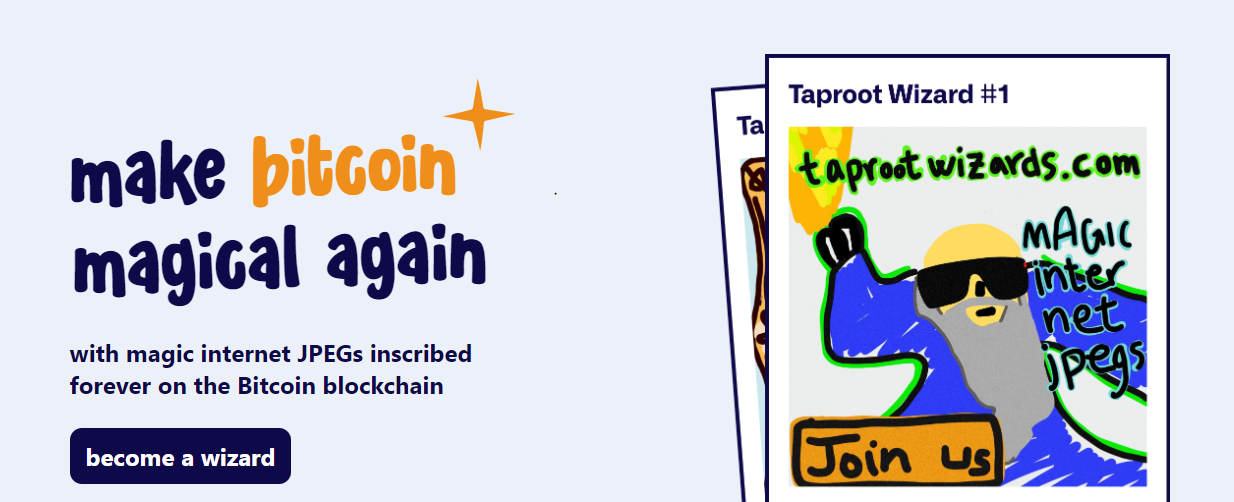
The first Taproot was released on February 1, 2023. At the time of writing, Taproot Wizards had created and inscribed 2,105 wizards. All in all, the project plans to release a total of 2,121 wizards. You can get a Taproot Wizard by completing quests on Wizard School.
The Dan Files consist of 10 small collections created by Counterparty contributor and NFT enthusiast Dan Anderson. Back in the day, Anderson was working on a Bitcoin NFT project for Counterparty. Only recently, he came across Ordinals. This inspired him to start working on Bitcoin-native NFTs, which he called The Dan Files.
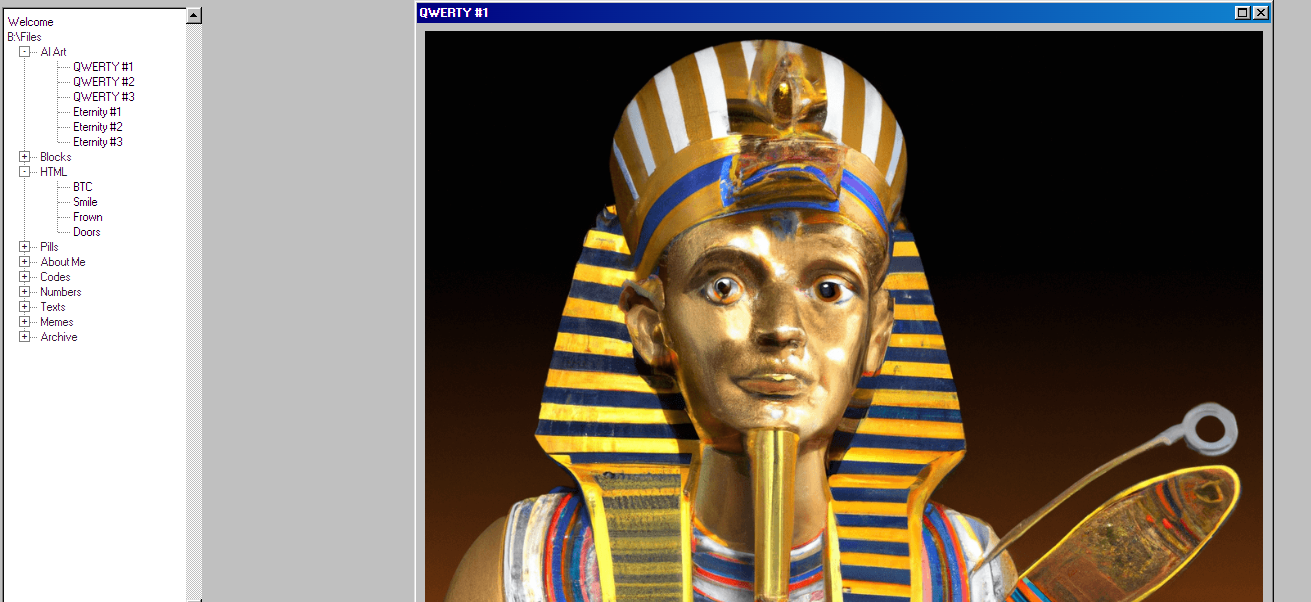
The 10 collections include AI artifacts, Bitcoin blocks, immutable HTML, hard pills to swallow, I existed (NFTs showing proof of Dan’s existence), nuclear codes, numberwangs, rare texts, shitposts only, and the classics.
According to the project’s Google Sheet record, there were 65 inscriptions at the time of writing. The first NFT was inscribed on February 1, 2023. The collections make use of various content types like PNG and JPG images, texts, GIFs, MP3, SVG, and HTML. You can get The Dan Files on the NFT marketplace, Magic Eden.
TwelveFold is a limited edition collection of 300 generative art inscriptions by Yuga Labs, the creators of the popular Bored Ape NFTs on Ethereum.
Yuga Labs sold 288 inscriptions via an auction that started on March 5, 2023, at 3 PM PST and ended 24 hours later. The remaining 12 inscriptions were set aside for contributors, donations, and philanthropy.
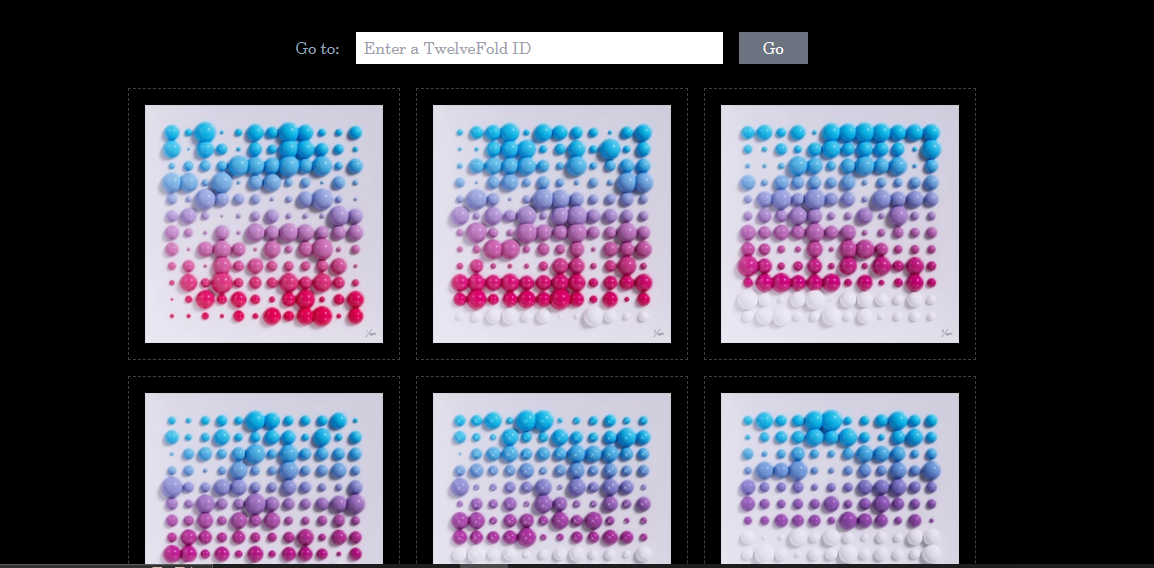
Ordinal theory inspired Yuga Labs to create its collection, where each inscription was made on a satoshi with a satpoint whose last number is 12. A few of the TwelveFold webp images are available for purchase on the NFT marketplace Gamma. Yuga Labs made the inscriptions on March 13, 2023.
Ordinal Punks is a PFP collection of 100 PNG images paying tribute to the famous CryptoPunks NFT project on Ethereum. The project appears to be run by a person going by the name of FlowStay on Discord, and Ordinal Punks can be purchased through OTC trading on Discord. The first inscription was created on February 1, 2023. As of this writing, the Ordinal Punks on Gamma haven’t been listed for sale.

Timechain Collectibles is a collection of artwork released in two series. Series 1 consists of 21 JPEG images depicting timepieces. The art gets inspiration from a treatise titled “Bitcoin Is Time.” The article was written in 2021 by software engineer Gigi.
The project is now working on Series 2, which portrays webp images or ascii-based images of 99 timekeepers. Timekeepers are the creators and holders of the timepieces in Series 1.
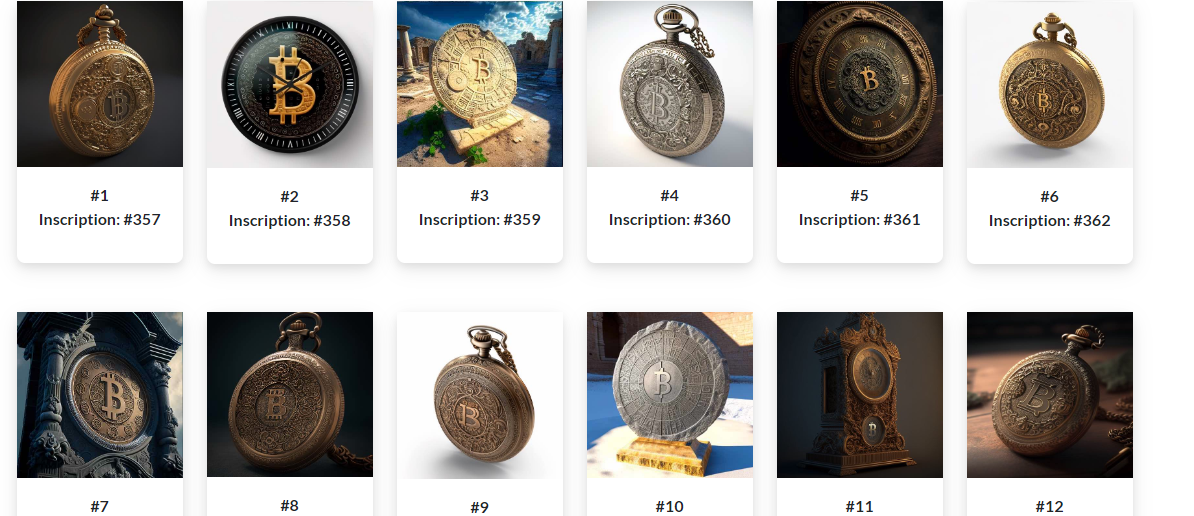
The project hasn’t revealed the person behind this Ordinals collection. However, there’s a team of about four moderators on the project’s Discord server. The first inscription in Series 1 was created on January 31, 2023. You can buy some pieces from this series on Open Ordex or bid for timepieces that are on auction on Scarce City.
Let’s take a look at the first marketplaces that have launched support for Bitcoin Ordinals NFTs.
Gamma is an NFT marketplace where you can trade and create Bitcoin Ordinals. The marketplace makes it easy to create inscriptions in a few quick steps without the need to set up a Bitcoin node. Gamma supports Hiro and Xverse wallets.
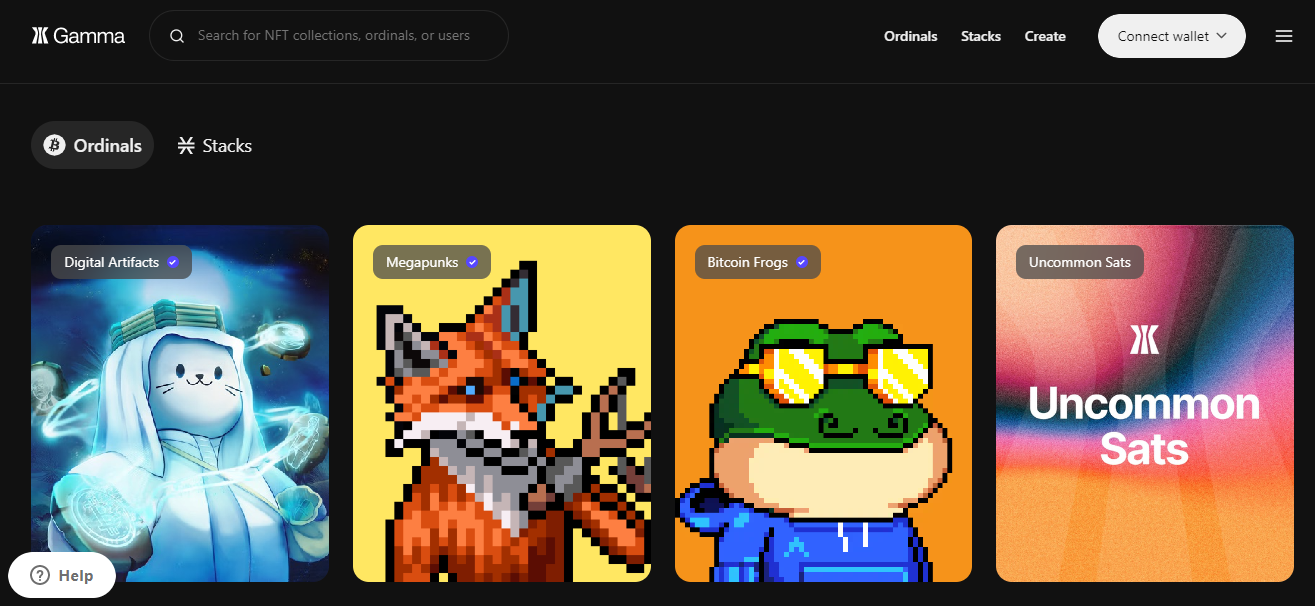
Gamma charges a 10% service fee plus a flat fee of 0.00021 BTC to create an inscription on its platform. TwelveFold, Megapunks, Bitcoin Frogs, and Ordinal Punks are some of the Ordinals collections featured on Gamma. Nonetheless, not all NFTs in these collections are listed for sale. For instance, Ordinal Punks NFTs haven’t been listed for sale on Gamma yet.
Magic Eden is a marketplace for buying and selling Bitcoin Ordinals. You can connect your Xverse, Hiro, or Unisat wallet to trade Bitcoin Ordinals on this platform. Magic Eden takes a 2% commission on all transactions. Some of the featured collections include Ordinal Penguins, Nakamoto Whales, Twelve Frog, and Bitcoin Bandits.
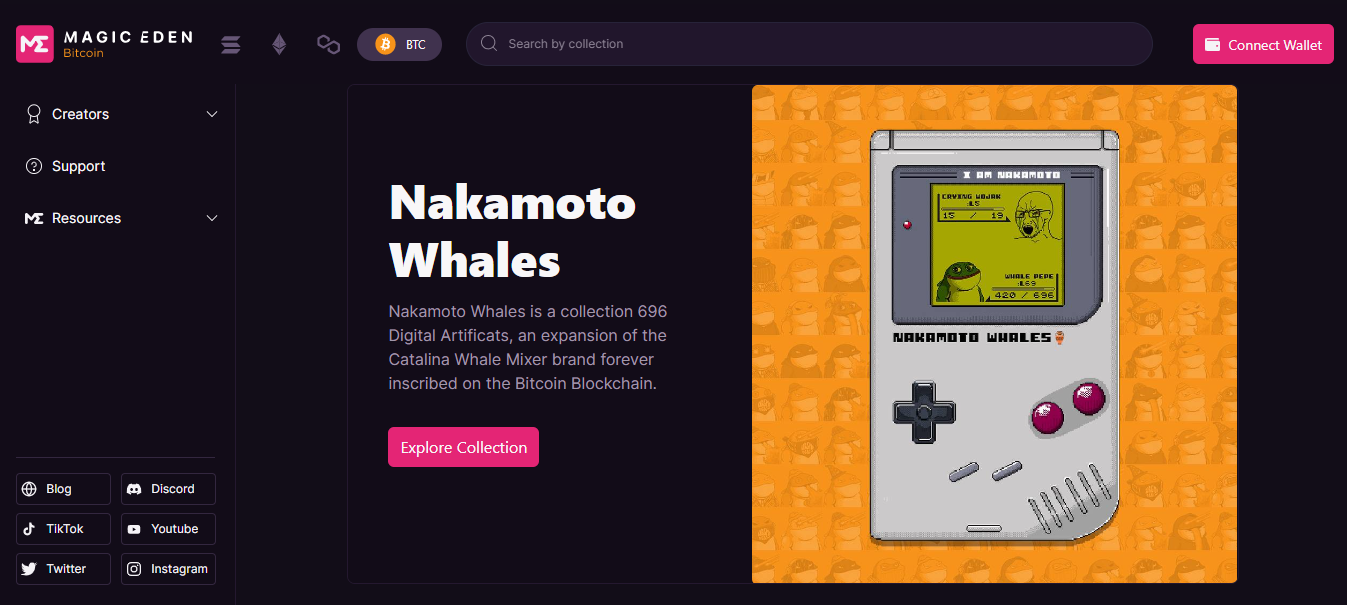
Projects can apply to drop their Ordinals collections through the Magic Eden launchpad or apply to list their collections on the marketplace.
OpenSea doesn’t support the Bitcoin blockchain (yet). Therefore, you can only trade wrapped versions of Bitcoin Ordinals on the NFT marketplace. These are Bitcoin Ordinals that have been vaulted using the multi-asset wallet Emblem Vault. The vault mints a new version of the inscription, which is compatible with Ethereum, while the original Ordinals NFT remains on the Bitcoin blockchain.

OpenSea charges a 2.5% fee on all secondary fees. You can use MetaMask, Ledger, or Coinbase Wallet to trade wrapped Bitcoin Ordinals.
Bitcoin maximalists are worried that Bitcoin Ordinals are a threat to Bitcoin’s vision of becoming a global currency. Their concern is based on the possibility that Ordinals transactions could price out standard on-chain Bitcoin transactions, forcing users to pay miners more fees for their transactions to have them prioritized.
If on-chain Bitcoin transactions become too expensive, users will have no choice but to look for cheaper alternatives among other public blockchains, challenging Bitcoin’s mission of becoming the future of money.
On the flip side, some believe that Bitcoin Ordinals are good for Bitcoin because they will attract more users and boost Bitcoin adoption. They could also be seen as a solution for Bitcoin’s long-term security question. After all, Bitcoin NFTs could provide a steady revenue stream for Bitcoin miners in the future by creating a high demand for block space that will drive up fees. This high incentive will motivate more miners to secure the Bitcoin blockchain. Also, Ordinals can enable other use cases like stablecoins and security tokens, attracting more projects to build on the Bitcoin blockchain.
While it’s difficult to predict how Ordinals will affect the future growth of Bitcoin, bringing use cases from other blockchains (back) to Bitcoin could end up benefiting the world’s largest and most decentralized cryptocurrency network in the long run.
Bitcoin Ordinals are something entirely new, having only been developed in January 2023. Yet, this could be just the beginning. The Ordinals project plans on implementing several improvements in the future, including allowing creators to give their inscriptions human-readable names.
With further development and innovation in Bitcoin NFTs on the horizon, more projects will emerge, followed by additional marketplaces supporting the trading and creation of Bitcoin Ordinals.
As Bitcoin Ordinals gain popularity, the Bitcoin community will be watching their impact on transaction fees, users, and miners.
An inscription is a Bitcoin-native NFT created by attaching arbitrary content like images, videos, and text to an individual satoshi. This content is stored on-chain, making inscriptions secure, decentralized, and immutable.
Using Ordinal Theory, a methodology of assigning ordinal numbers to individual sats in the order in which they are mined, people can track the movement and ownership of an inscribed sat throughout history, allowing them to trade or gift it. At the time of writing, the number of inscriptions has surpassed the 1 million mark.
Initially, users needed the ord software and a Bitcoin node to create an inscription; but now creating inscriptions is easy and non-technical, thanks to Gamma. The NFT platform enables users to create inscriptions in a few quick steps at a flat fee of 0.00021 BTC plus a 10% service fee.
The cost of an inscription depends on the size of the content: the larger the inscribed file, the higher the cost.
According to data on Dune analytics at the time of writing, most inscriptions cost 4 to 8 sats per vbyte, with some as high as50 sats per vbyte. Some experts believe that ordinal inscriptions are making Bitcoin block space more valuable, and the cost per vbyte could rise to 200 sats in the future.
Digital artifacts are complete because their metadata and the image are stored on-chain. Conversely, traditional NFTs are incomplete since they typically point to an off-chain centralized destination where the NFT metadata is stored, exposing the metadata to manipulation and loss.
Also, digital artifacts are scarce due to the fact that they depend on Bitcoin (which has a limited supply) to be minted, transferred, and stored. On the contrary, traditional NFTs can be minted in unlimited numbers, making them less scarce and less valuable.
You can buy digital artifacts by connecting a supported wallet to NFT platforms like Magic Eden, Gamma, Ordinals Wallet, and Open Ordex.
Next, explore the Bitcoin Ordinals collections listed for sale and verify their authenticity by confirming that the inscription ID is listed on the Ordinals explorer.
Also, check the rarity and the attributes of the respective Bitcoin Ordinals. This information should be available in the description of the digital artifact on the NFT platform. Buying a very rare NFT could prove worthwhile in the long run if your goal is to sell it for a profit.
Once you’ve found your preferred Bitcoin NFT, go ahead and buy it. You’ll need BTC in your wallet to complete the transaction.
Since Bitcoin Ordinals are new, they have been trading mainly on Discord, where buyers and sellers complete deals over-the-counter on project servers. Some projects also hold auctions on their websites, allowing potential buyers to place bids on the collections they have created.
Moreover, buyers could find a few Bitcoin Ordinals listed for sale on NFT platforms like Gamma, Ordinals Wallet, Magic Eden, and Open Ordex. Therefore, the place where you can buy Bitcoin Ordinals may vary depending on the collection you’re interested in.